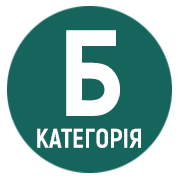FRANCOIS VILLON – VICTOR DOMONTOVYCH: BETWEEN NEW AND PAST
DOI:
https://doi.org/10.31494/2412-933X-2019-1-8-111-117Keywords:
Victor Domontovych, François Villon, artist, crisis, society.Abstract
The article deals with the story of Victor Domontovych "Francois Villon". The text is considered through the prism of intellectual searches of Petrova-Bera in the field of philosophical and historiosophical research. It is established that the genre of the polite literature biography is used by the writer as a form for philosophical considerations about the crisis in society and the problem of the artist. The author and artist's problem is not just reconsidered through the prism of the crisis of centuries, the writer compares the transition from the Middle Ages to new times and changes in society at the turn of the nineteenth and twentieth centuries. The image of Francois Villon appears due to the author's artistic embodiment of a number of acute problems: poet and society, love and money, depravity and corporeality, holiness and sinfulness, talent and corruption, life and death, etc. Destruction of the image of the Madonna, the desirable and unattainable, is the destruction of the ideals of the artist, of his own Ego, this is the path leading to the abandonment of the ideals, and partly makes it possible for the reader to understand the tragedy of the figure of Francois Villon. Victor Domontovych, drawing on the image of the poet of ancient times, designs the changes which occur in it under the influence of the crisis of social and personal, to the person of the beginning of the twentieth century. Thus, the author redefines the world and the person of the era of change, in particular, the creative person. At the same time in the work of Victor Domontovych Francois-poet inferiors to the primacy of Francois-incarnation of the era. Fighting with himself, the rejection of the paths of conventions and prohibitions leads to the emergence of Francois as a criminal, violator of the rules of social morality. Talent is what remains with the artist, despite changes in social status, name and behavior. The author reconsiders concepts of faith and holiness, sin and punishment in times when other values are leveled, except of the power of money. In this context, the images of priests in transitional periods, the role of religion and church are also considered. One of the key figures in the life of Villon was Guillaume, who brought up a boy with prayers in the enclosed space: a garden-church-cemetery. The young man's rival coincides with the exit from the usual space and the crisis of conviction.
References
Агеєва В. Дзеркала й задзеркалля Віктора Домонтович/ Віра Агеєва // Домонтович Віктор. Самотній мандрівник простує по самотній дорозі (Романізовані біографії. Оповідання, роман). – К., 2012. – С. 1–19.
Домонтович В. Проза: В 3-х т. / ред. й супр. ст. Ю. Шевельова. [Мюнхен] : Сучасність. Т. 3. – 558 с.
Павличко С. Теорія літератури / Передм/ Марії Зубрицької. – К.: видавництво Соломії Павличко «Основи», 2002. – 679 с.
Шевельов Ю. Шостий у ґроні // Домонтович В. Проза: В 3 т. – Нью-Йорк: Сучасність, 1988. – T 3. – C. 505–556.
Шерех Ю. Віктор Петров, як я його бачив // Юрій Шерех. Пороги і запоріжжя. Література. Мистецтво. Ідеологія: В 3 т. – Харків, 1998. – T. 2. – C. 88–96.






